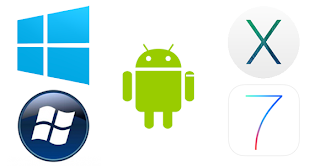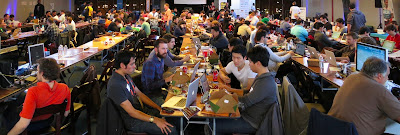As Tom Cruise walked through the mall in the blockbuster
film “Minority Report” advertisements scanned and recognized his eyes, triggering
messaging that to spoke directly to him - asking questions of prior purchases.
The NewAer team often uses this scene for inspiration - the penultimate in
passive custom engagement driven by technology and uniquely delivered to a
store guest. It’s futuristic, yet recalls
a time when store owners actually knew their customers, what they liked and what
they’d purchased previously.
Today in the land of big-box retail stores the customer has
been lost by virtue of volume. Yet E-commerce
giants like Amazon know your personal habits just as those old neighborhood merchants
at the 5 and dime did. It’s a digital step toward that Minority Report
experience…and in 2014 the NewAer team is combining our Proximity Platform with the intelligence of the E-commerce industry to create
real-life ‘wow’ moments for shoppers. In
the coming weeks we’ll release software both directly and through partners to
let big-screen digital signage inside a store speak to customers and enable any
brand tablet to be used as this intelligent marketing engine…to name a few
early examples, as we’re readying our first retail display software product
beta’d in 2013 called Kiosk, for an early 2014 launch.
Consumers can already see other players in the industry experimenting
with the concept of passive engagement. Inside
of the Apple stores, iBeacons trigger within your proximity and internal location-based
push notifications pop a message on your phone when you walk near accessories,
similar to getting a text message. While this is clever, it’s a bit generic…does
every customer want alerts on the same merchandise? Plus, the experience nags with
a second notification when as a guest walks by the same beaconing point again.
We feel that will aggravate consumers to the point of them disabling this
service, and it’s a pain point we have anticipated.
The NewAer Platform eliminates duplicated events messages as
well as allowing retailers to mimic the behavior of the advertisements in Minority
Report, with the advantage of empowering the consumer into opting in to this
engagement. With Kiosk running on a
dedicated PC or tablet, it will “wake up” with a special message to specific customers
based upon what a retailer knows about them.
If a merchant has a back-end database of prior purchases, rewards or
points, the display becomes even more engaging to the customer. NewAer stands for ambient, automagic events
happening behind the scenes without the annoying check-in or another action performed on any device. Thanks to the power of our cloud-based beacon
system, the device and the environment operate seamlessly with one another.
For this to work, we leverage our Proximity Platform to
enable smartphones, tablets or computers to communicate through a scrambled
identifier, beaconing to other wireless devices. For retail stores, these identifiers are used
to greet customers within radio range of our Kiosk application. By opting into broadcasting this unique
number, personal identity is masked by our platform, but the retailer (who may
have a loyalty program) can address the customer.
To see further how our double blind system works, you can
read more about our privacy policy to see how we step out of the loop on user
data and enable machine-to-machine communication links.
So there you have our wrap-up of 2013. We are excited to see where our industry of
proximity marketing is headed. While
early stories are just starting to come in from technologists, we are
monitoring consumer habits and the latest wins and fails in the industry to
make the most robust, customer friendly, customizable solution with our
NewAer Proximity Platform SDK.
Here’s to a great 2013, and the future of 2014 cannot come
soon enough!














